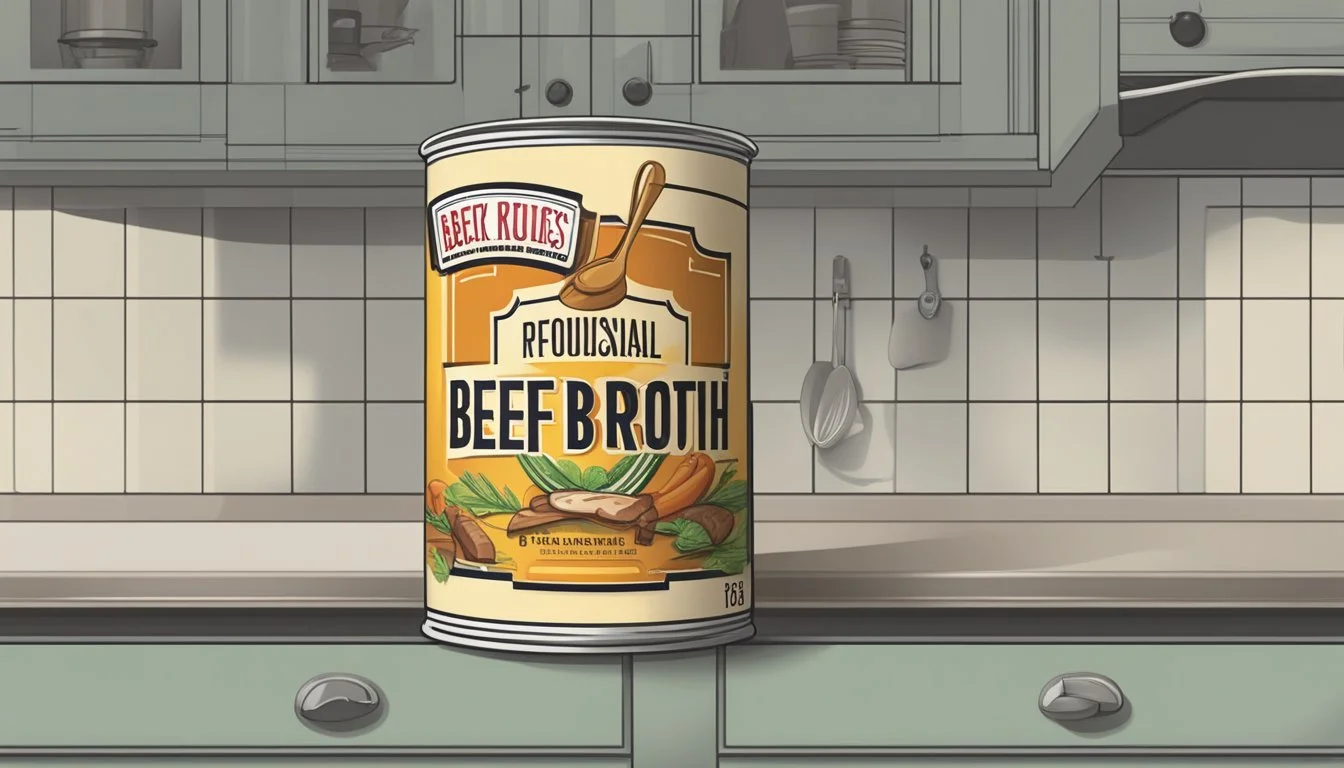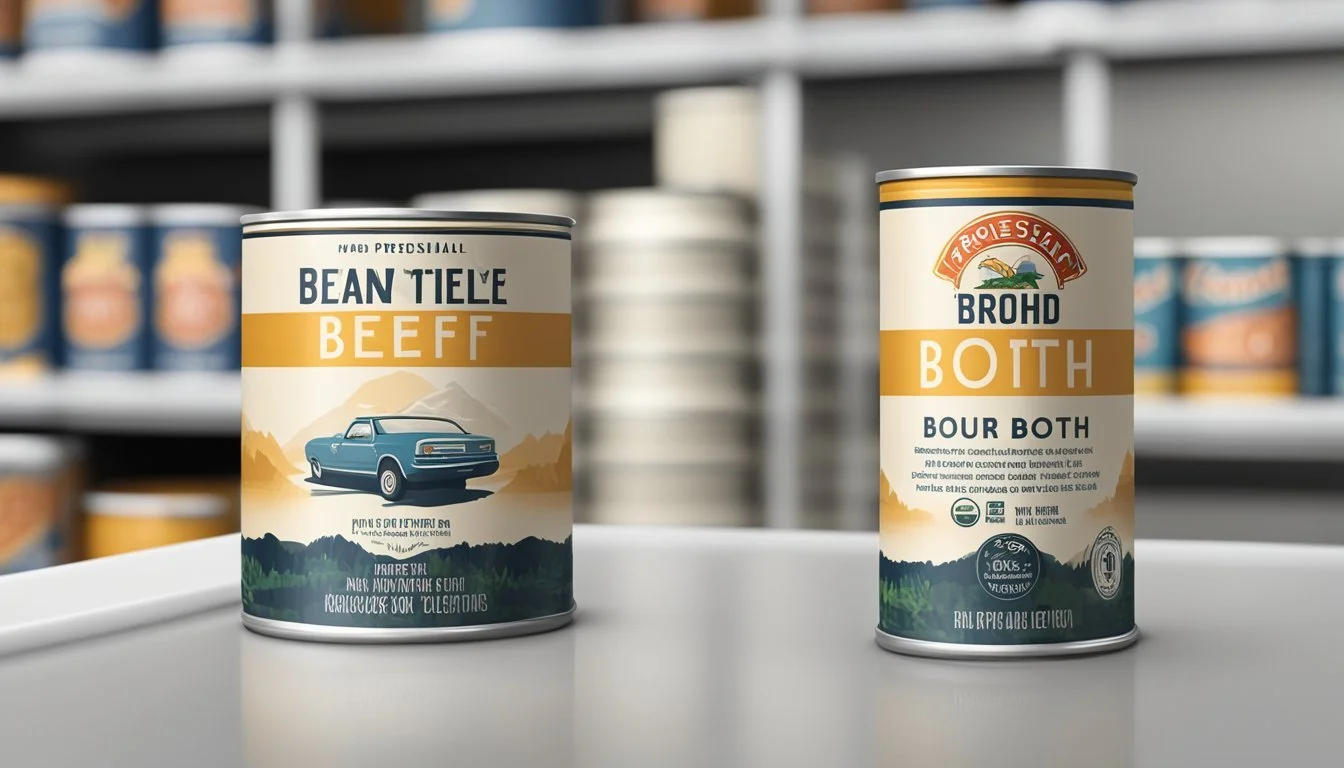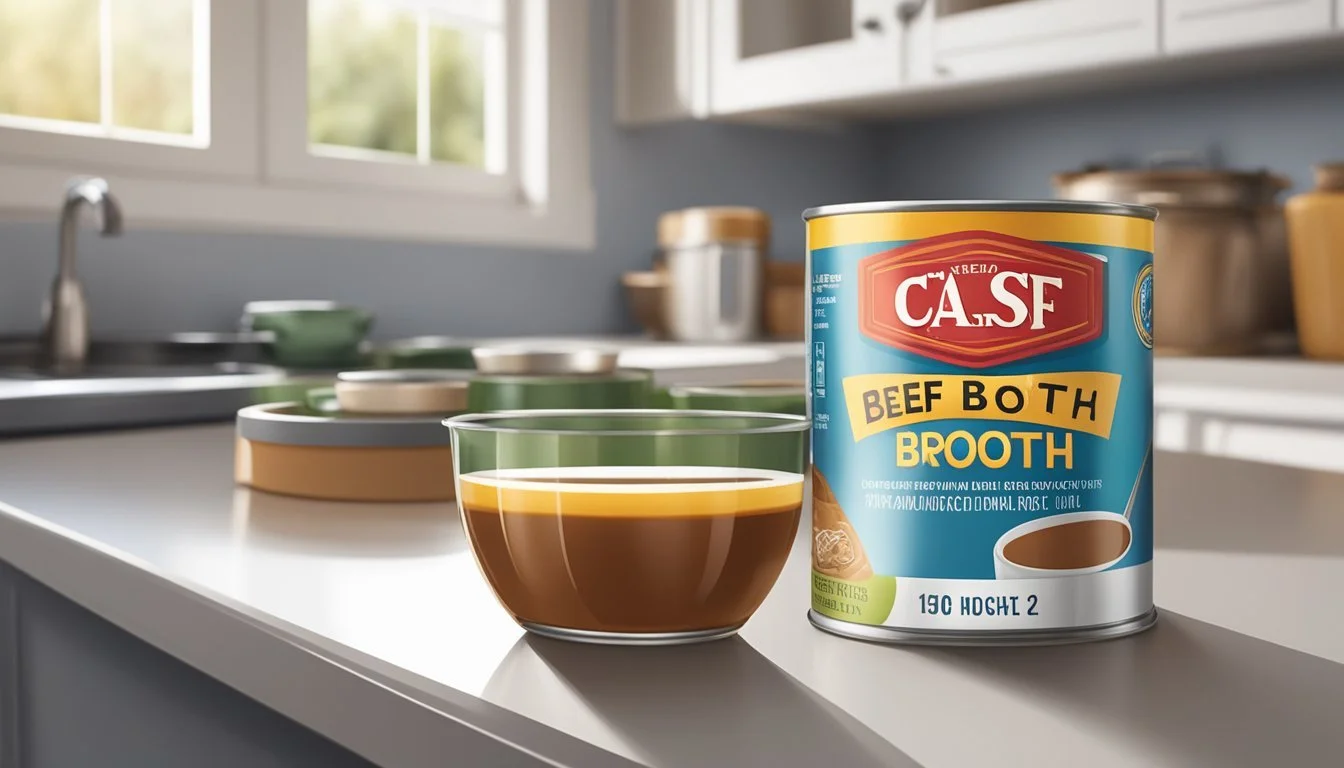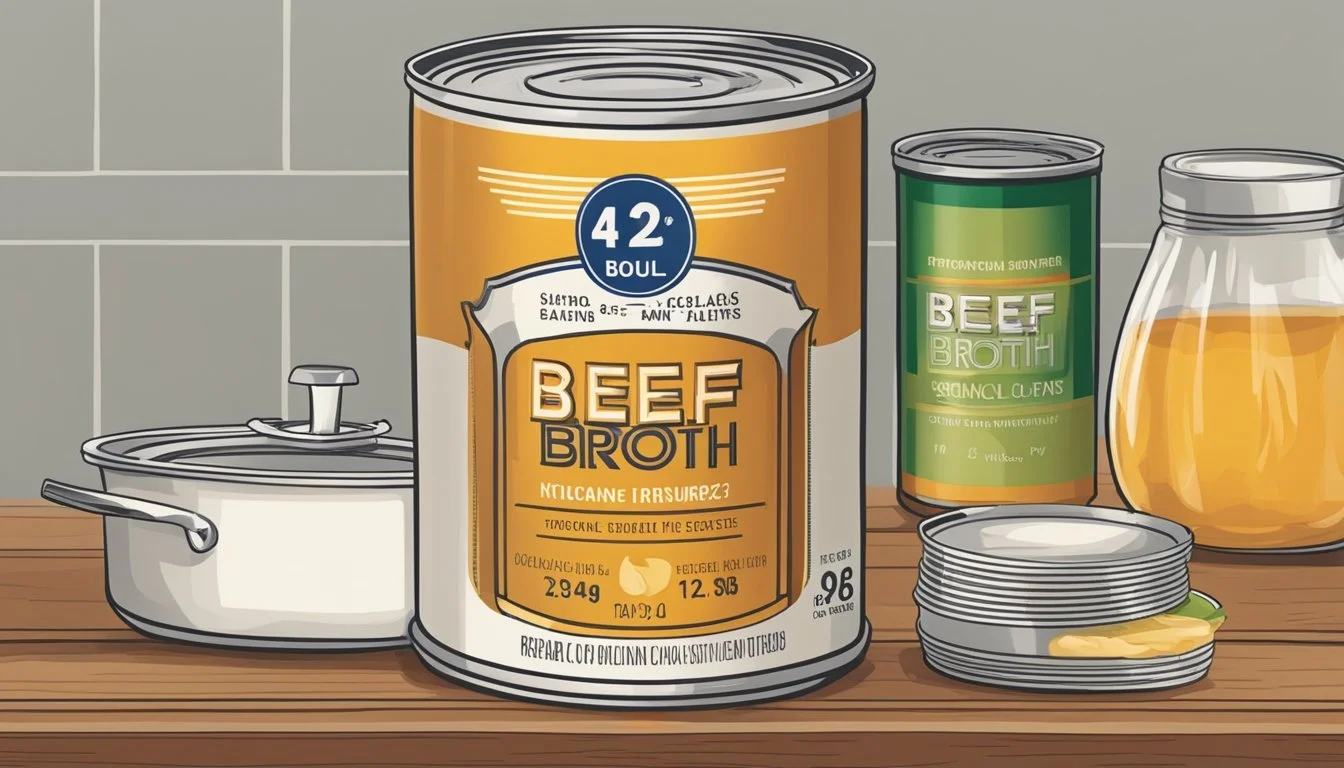How Many Ounces in a Can of Beef Broth
Standard Sizes Explained
When considering the contents of a kitchen pantry, cans of beef broth often feature prominently due to their frequent use in a variety of recipes. Determining the amount of liquid in these cans is essential for following recipe instructions accurately. Generally, the most common size for a can of beef broth found on grocery store shelves contains 14.5 ounces. This quantity is particularly useful for recipes that specify the need for a single can, ensuring that the measurements correspond precisely to the expectations of the dish being prepared.
However, manufacturers also produce cans of beef broth in various other sizes, which can introduce some confusion. While the standard 14.5-ounce can is ubiquitous, it is not the only option available to consumers. Smaller and larger quantities can be found, making it important for individuals to verify the volume by checking the label on the can. The consistency in the size of the cans facilitates ease of use in cooking and recipe development.
In terms of volume conversion, a 14-ounce can translates to approximately 1¾ cups of liquid, whereas the slightly larger 14.5-ounce can is just under 2 cups. This information is particularly valuable for cooks needing to convert measurements or substitute ingredients. Knowledge of these conversions allows for flexibility in the kitchen, as well as precise adherence to recipe requirements.
Understanding Broth and Its Importance
This section examines the distinctions between broth and stock, and explores the health advantages associated with bone broth, particularly its nutritional composition and benefits for joint health.
Defining Broth and Stock
Broth is a savory, nutrient-rich fluid obtained by simmering meat, often with bone, vegetables, and herbs in water. Its primary purpose in cooking is to provide a flavorful base for soups, sauces, and gravies. Stock and broth are frequently used interchangeably, but there is a subtle difference: stock often involves a longer simmering period to extract flavors from beef bones and connective tissues, which results in a deeper taste and richer mouthfeel. Homemade beef broth not only enhances the flavor profile of various recipes but also incorporates the nutritional benefits of the ingredients used.
Health Benefits of Bone Broth
Bone broth, in particular, made from simmering beef bones, is renowned for its health advantages owing to its high protein content and array of amino acids. It is considered supportive of joint health as it contains nutrients such as gelatin, which breaks down into collagen in the body—a vital component of joint tissue. A serving of bone broth can be protein-dense and may include an array of minerals. These help in making it a cherished ingredient for its perceived healing properties and capacity to support overall wellness. However, it is crucial to check nutrition facts when purchasing broth to understand its specific nutrient content.
Culinary Uses of Beef Broth
Beef broth adds depth and rich flavor to a variety of dishes. From its role as a fundamental ingredient in soups and stews to its ability to enrich gravies, sauces, and rice, beef broth is a culinary staple.
Recipes Involving Beef Broth
Beef broth is used extensively in:
Soups: It serves as a base for classics such as French onion soup and beef barley soup.
Stews: The savory liquid enhances the taste of beef stew (What wine goes well with beef stew?) and pot roast.
Sauces: A reduction of beef broth contributes a concentrated flavor to sauces.
Gravies: Combined with pan drippings, it creates rich, flavorful gravies.
Rice Dishes: Broth can be used instead of water for cooking rice to infuse it with extra flavor.
When cooking with beef broth, one should simmer it with herbs and spices to tailor the flavor profile to the specific recipe being prepared.
Beef Broth as a Substitute
Beef broth can replace other liquids in recipes to intensify the overall taste. Here's how it can be used as a substitute:
In place of water: To add umami and richness, use beef broth when preparing rice, or to deglaze a pan.
Substitute for other broths: Beef broth can be used instead of chicken or vegetable broth to impart a deeper flavor profile.
In lieu of wine: It can serve as a non-alcoholic alternative in recipes that call for red wine.
When substituting beef broth, it's crucial to consider the dish's intended flavor, as beef broth has a potent, distinctive taste that may alter the final outcome.
Measurement and Conversion
This section focuses on understanding the relationship between weight and volume in beef broth packaging and how to convert between common measurements used in recipes.
Standard Can Sizes
The industry standard can size for beef broth tends to be 14.5 ounces. However, it is important to note that cans may also come in other sizes, so one should always check the label. In terms of liquid measurement, these sizes translate as follows:
Regular Can: 14.5 ounces (approx. 1.81 cups)
Ounces to Cups Conversion
When converting ounces to cups, it is essential to use the correct conversion rate for liquid ingredients. One cup is equivalent to 8 fluid ounces. To convert ounces to cups, the formula used is:
Number of Ounces / 8 = Number of Cups
Here is a straightforward conversion table for quick reference:
Ounces (oz) Cups (c) 8 1 16 2 32 4 (1 quart) 128 16 (1 gallon)
To apply this to broth, one can determine that, for instance, a 14.5-ounce can of beef broth contains approximately 1.81 cups. The actual measure tends to be slightly more than 1¾ cups when considering the standard can size of 14.5 ounces.
Making Homemade Beef Broth
When creating homemade beef broth, the choice of bones and aromatics is crucial to developing a full-bodied flavor. Traditional recipes focus on simmering these ingredients together to extract the richness from the bones and the essence of the vegetables.
Ingredients for Beef Broth
Bones: Ideally, a mix of meaty bones such as beef shank or short ribs. Around 4 pounds of bones is recommended.
Vegetables: A classic mirepoix—a mix of onions (2, halved), celery (3 stalks, roughly chopped), and carrots (3, roughly chopped). Add 6 cloves of garlic for depth.
Aromatics: Options include a few sprigs of fresh thyme, a couple of bay leaves, and a teaspoon of whole black peppercorns.
Cooking and Simmering Process
Preheat your oven to 450°F (232°C) and arrange the bones on a baking sheet. Roast until they develop a deep brown color, typically about 30 minutes, to enhance the flavor.
Transfer the bones to a large stockpot and add enough cold water to cover them completely, usually around 6 quarts.
Bring the pot to a gentle simmer, skimming off any foam or impurities that rise to the surface.
Add the prepared vegetables and aromatics to the pot. Ensure the water level covers the ingredients.
Continue to simmer the broth uncovered. Periodically skim off impurities and fat. Simmer for at least 6 hours, preferably closer to 12, allowing flavors to concentrate.
Strain the broth through a fine-mesh sieve, discarding the solids. If desired, the broth can be further clarified for a more refined presentation.
Storing and Preserving Beef Broth
Proper storage techniques ensure that beef broth retains its flavor and remains safe for consumption. Whether dealing with homemade or store-bought broth, effective methods for short-term and long-term preservation include refrigeration, freezing, and canning.
Refrigeration and Freezing Options
Storing beef broth in the refrigerator is suitable for short-term use. Beef broth should be kept in airtight containers and can last up to 4 days. For longer preservation, freezing is the recommended approach. To freeze broth, consider these steps:
Let the broth cool completely after cooking.
Pour into airtight containers or freezer bags; leave some space for expansion.
Alternatively, use ice cube trays to freeze broth in smaller, easy-to-use portions.
Once frozen, transfer the cubes to a freezer bag or container.
Label with the date to ensure it’s used within 3 months for the best quality.
Long-Term Storage Solutions
The freezer lends itself to keeping leftover broth safe for several months. When properly frozen and stored in airtight containers, it can prevent freezer burn and taste degradation. For those interested in even longer storage solutions, pressure canning is an effective method.
To pressure can beef broth:
Fill sterilized jars with broth, leaving appropriate headspace.
Wipe jar rims and apply lids and bands until finger-tight.
Process jars at 10 pounds of pressure for 20 minutes for pints and 25 minutes for quarts, adjusting for altitude.
Consult trusted guidelines such as those provided by the National Center for Home Food Preservation or the USDA for specific instructions.
These methods will extend the shelf life of your beef broth, ensuring it's ready for future recipes.
Beef Broth Variants and Brands
Beef broth is a staple ingredient in the culinary world, offering a flavorful base for soups, stews, and sauces. Variations like low-sodium and vegetable infusions cater to dietary preferences, while numerous brands provide a broad selection for consumers.
Low-Sodium and Flavored Broths
For health-conscious consumers, low-sodium beef broths are a preferred choice, as they offer the rich flavor of beef while containing less salt. Brands typically offer these lower-sodium versions alongside their standard broths. Additionally, flavored broths, such as those infused with herbs, spices, or additional vegetable flavors, add complexity and depth to dishes. These variations extend beyond pure beef broth to include chicken and vegetable broth, providing a range of options for culinary applications.
Commercial Beef Broth Brands
When it comes to purchasing store-bought beef broth, consumers have a multitude of brands to consider. Some of the well-recognized brands include:
Swanson: Known for their consistent quality, offering both regular and low-sodium options.
Pacific Foods: Offers organic broths that appeal to those seeking natural ingredients.
College Inn: A long-time favorite that has been providing rich broths for decades.
Better Than Bouillon Concentrate: A versatile option that allows cooks to easily adjust the broth's intensity and is available in both regular and low-sodium varieties.
These brands and others like them offer a range of beef broth products, from cartons and cans to concentrates like Better Than Bouillon, ensuring a fit for every recipe and preference.
Nutritional Information
The nutritional information of beef broth is an important aspect for consumers focusing on dietary needs and weight management. This section details the calories and nutrients found in this common kitchen staple and discusses its role in diets and weight loss strategies.
Calories and Nutrients in Beef Broth
One cup of canned beef broth typically contains about 17 calories. It is a low-energy food item that can sustainably fit into various diet plans. Here are some specific nutrients found in beef broth:
Sodium: A cup of ready-to-eat beef broth can contain approximately 893 milligrams of sodium, which plays a crucial role in diet planning since high intakes can lead to health issues.
Collagen: While not present in high quantities in store-bought broths, collagen is a notable component that can be found more abundantly in homemade broth due to long simmering times of bones and connective tissues.
Protein and Fats: Beef broth typically has a low protein and fat content, with minimal contributions to daily recommended intakes.
Beef Broth in Diets and Weight Loss
With its low calorie count, beef broth is often incorporated into weight loss diets. It provides a sense of satiety without contributing significantly to the daily caloric intake, and it can be used as a base for soups and stews which are fulfilling yet healthy. When considering beef broth for weight loss, one should:
Look for low-sodium alternatives or make homemade broth to manage sodium intake effectively.
Use beef broth to replace higher-calorie ingredients to help reduce overall caloric ingestion which can aid in weight management.
Remembering freshness matters, as fresh homemade broth may offer higher nutritional value than its store-bought counterpart. The convenience of canned beef broth, however, usually offers a consistent and ready-to-use option for those maintaining a balanced diet.
Common Questions About Beef Broth
When cooking with beef broth, chefs often encounter questions regarding substitutes for the original ingredient and methods to adjust the broth's consistency and flavor. The following subsections address these topics with clear and practical advice.
Substitutes for Beef Broth
Substituting beef broth in recipes requires consideration of the desired flavor profile and availability of ingredients. Here are some common substitutions:
Soy Sauce: To replicate the umami quality of beef broth, one can use soy sauce, diluted with water to curb the saltiness.
Vegetable Broth: This is a suitable alternative for vegetarians, imparting a different but rich flavor.
Chicken Broth: It provides a lighter taste and can seamlessly substitute beef broth in most recipes.
Worcestershire Sauce: A combination of Worcestershire sauce and water can be used; however, it is stronger and should be used sparingly.
Bouillon Cubes: These concentrated cubes dissolve in water and are practical for achieving a similar beef broth flavor.
Water with Spices: In a pinch, water can be used with the right combination of spices, herbs, and a pinch of salt to mimic beef broth taste.
Adjusting Consistency and Flavor
Manipulating the consistency and enhancing the flavor of beef broth can elevate a dish. Here's how:
Tomato Paste: Adding tomato paste can thicken the broth and provide a deeper color and richer flavor.
Reduction: Simmering the broth slowly will reduce volume and concentrate flavors for a fuller body.
Cornstarch or Flour: Use these to thicken the broth for gravies or sauces; mix with cold water first to prevent clumps.
Seasonings: Adjust the flavor with additional herbs, spices, or salt, but add incrementally to ensure balance.
Through these methods, one can tailor beef broth for various culinary needs, mastering both the technical and flavor aspects of cooking with this ingredient.
Tips and Tricks in the Kitchen
Efficiently utilizing beef broth can elevate one's cooking by enhancing flavors and reducing waste. Knowing how to use the liquid effectively in the kitchen is crucial for any home cook.
Deglazing Pans with Beef Broth
When one sautés or sears meats, flavorful bits often stick to the pan. Deglazing involves adding a liquid, like beef broth, to the hot pan to loosen these bits. This not only cleans the pan but also creates a flavorful foundation for sauces or gravies. To deglaze a pan, pour in a cup of beef broth after removing the cooked meat, then scrape the pan gently with a wooden spoon over medium heat.
Practical Use: After cooking a steak or pot roast, use approximately 8 ounces (1 cup) of beef broth to deglaze the pan.
Beef Broth as a Base for Other Dishes
Beef broth is a versatile kitchen staple that serves as an excellent base for various dishes, adding depth and richness.
Grains: Substitute beef broth for water to cook grains, such as rice or quinoa, infusing them with extra flavor. Requires typically 2 cups of broth per 1 cup of grains.
Leftovers Revival: Leftover grains or vegetables can be rejuvenated by simmering them in beef broth to refresh their taste and texture.
Utilizing beef broth in these ways can transform the quality of one's cooking, making it a go-to ingredient in the kitchen.









